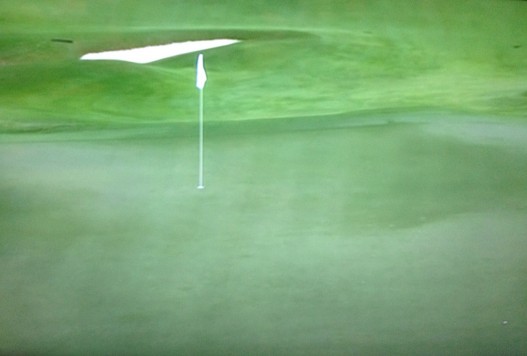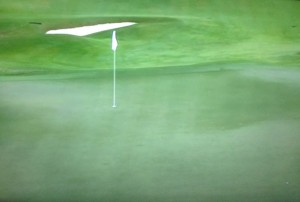
Mastering Grainy Greens
This week the golfing world has been waiting anxiously for the return of Tiger Woods after a long spell out due to injury. The venue of Isleworth in Windermere Florida is a unique and beautiful destination.
During my playing career on the Ladies European Tour I was fortunate to spend the winter months working on my game in the area and was very privileged to play within the exclusively gated community of Isleworth. As you will have noticed from the coverage it is in pristine condition and a pretty tricky course.
After round one much of the talk was based around the seven approximate “fluffed” chip short pitch shots that Tiger played. How could such a world-class player and icon of the game who possesses a short game of remarkable touch, feel and creativity play shots that are too often a familiar sight on our courses?
Two reasons that can be a factor from any player could be
- Technique
- Practice
Lets take a look at the photo below, where the influence of “grain” is hugely apparent on the putting surface this is also prevalent on the fairways and green surrounds.
These greens comprise of Bermuda grass which are seen in the southern hemisphere. The extremely “tight” fairways and grainy greens coupled with huge undulations require an outstanding short game with a precise strike. If you are able to putt this is often the better option.
This is a subject I could write in great depth but all I would like you to be aware of from this post is the effect of the picture whilst putting into practice if you are lucky enough to visit a winter destination such as Florida. A simple rule to assist you when you see darker and lighter areas of grass you know the grain will influence the speed and somewhat direction of the putt.
- Darker the grass= putting into the grain (slower putt)
- Lighter the grass=putting down the grain (faster putt)
Looking at the edge of the hole provides immediate advice, there will be a clean-cut section of the hole but also visible around the perimeter of the hole a dry, brown, fluffier section of grass.
The grain of the grass will grow towards the fluffier, brown less cleanly cut side of the hole, in the picture the player putting from the bottom right will be putting down grain as we can’t obviously assess the hole.
Brushing the grass with the back of your hand provides you with additional knowledge, if it is rough then the grain is against and smooth, the grain is with you. Please do not do this in competition! this is an infringement of the rules of golf “testing the surface”
I hope this has given you an in sight into reading the grain when on your winter holidays, please let me know how you get on






